ID:I GALLERI


Refugium and Refugium II, Impasto; glue, textile fibers, salt, paper, Barley flour. Tempera, oil and oven paint, on linen, painted wooden frames, 79 x 56 cm and 49 x 75 x 9,5 cm

Installation view med Refugium III

Refugium III, painted MDF boards, spotlight, blue photo filter, mixed media and oil on linen, oil on artifical plants, paper, glue, Barley flour, salt, vynil color and pigment on MDF board, 2 x 200 x 300 cm x 2 x 150 x 200 cm

Detail of the sculpture Revelation, view through the opening

Uppenbarelse,impasto, textile fibers, glue, paper, Barley flour, salt. Tempera and oil on linen, 122 x 86 cm

Film still from the video piece Splittra. I painted a copy of the painting Uppenbarelse , a view of Paradis-like greenery, which is slowly being cracked, recorded with a high-speed camera. The video is 1,30 min long. Editing, by photographer Erik Hagman

Marken lyser även i mörkret, installation made with the broken glass shards from the painting that is being cracked in the video piece Splittra. Oil on glass, soil and spotlight


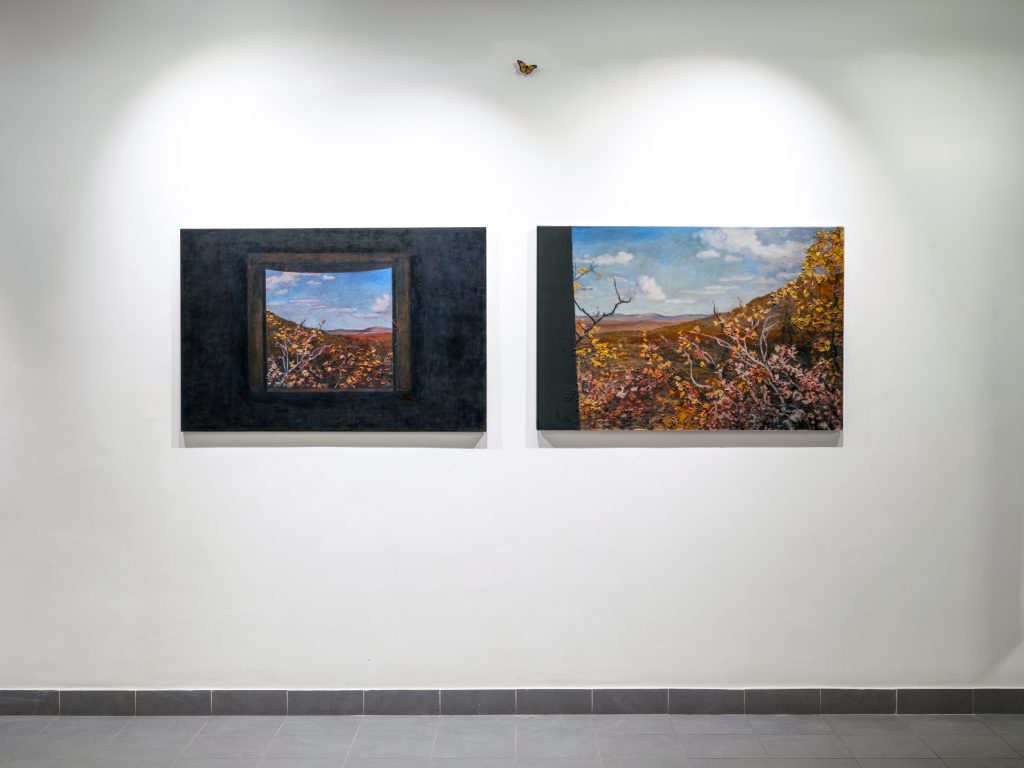



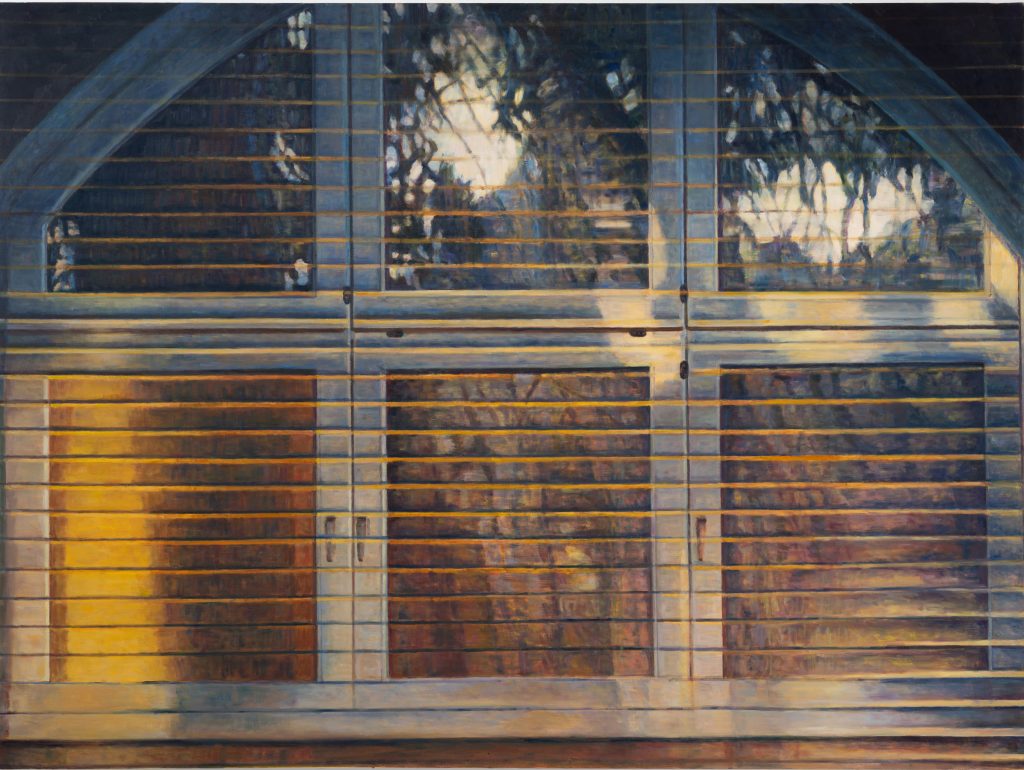



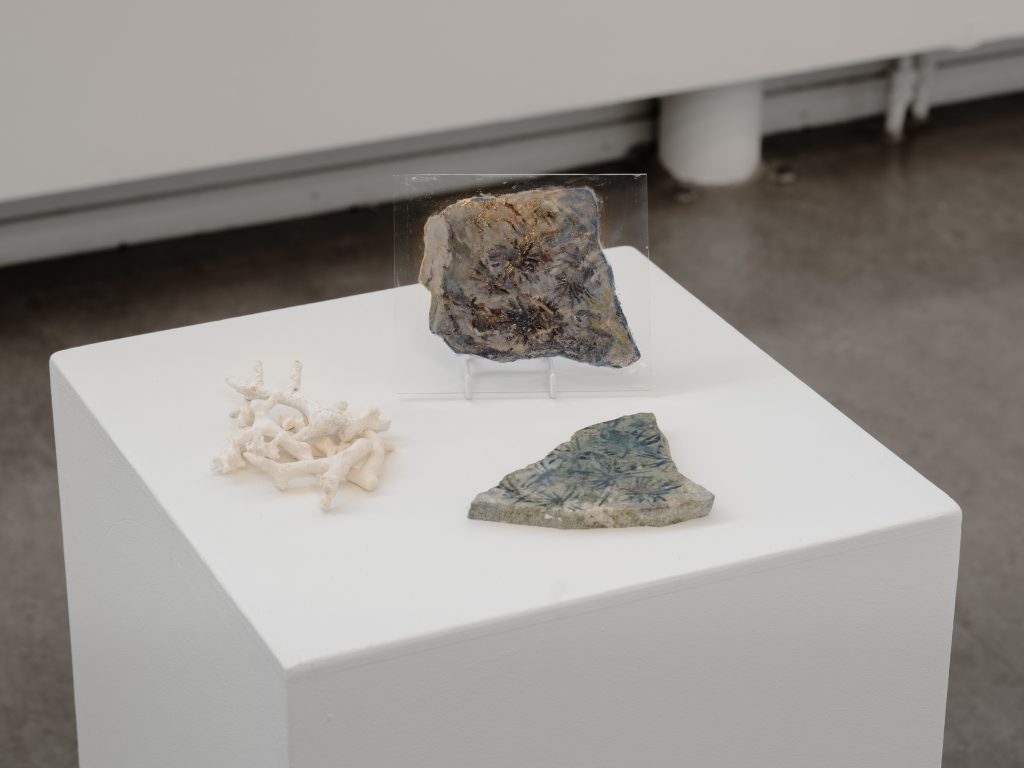






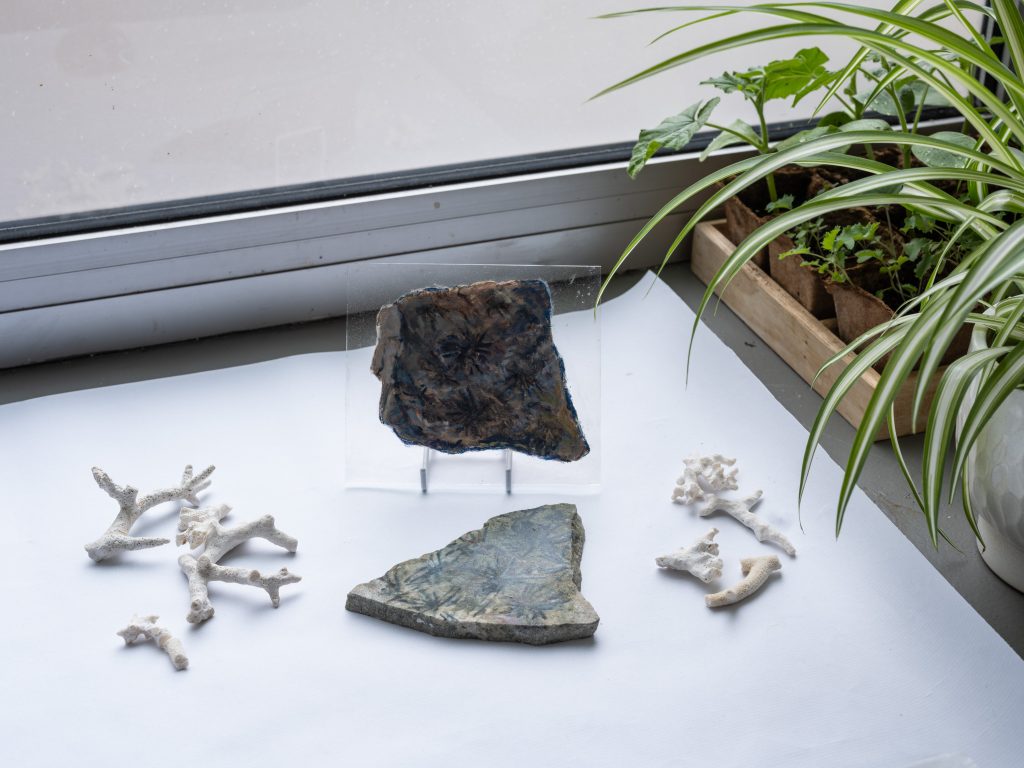




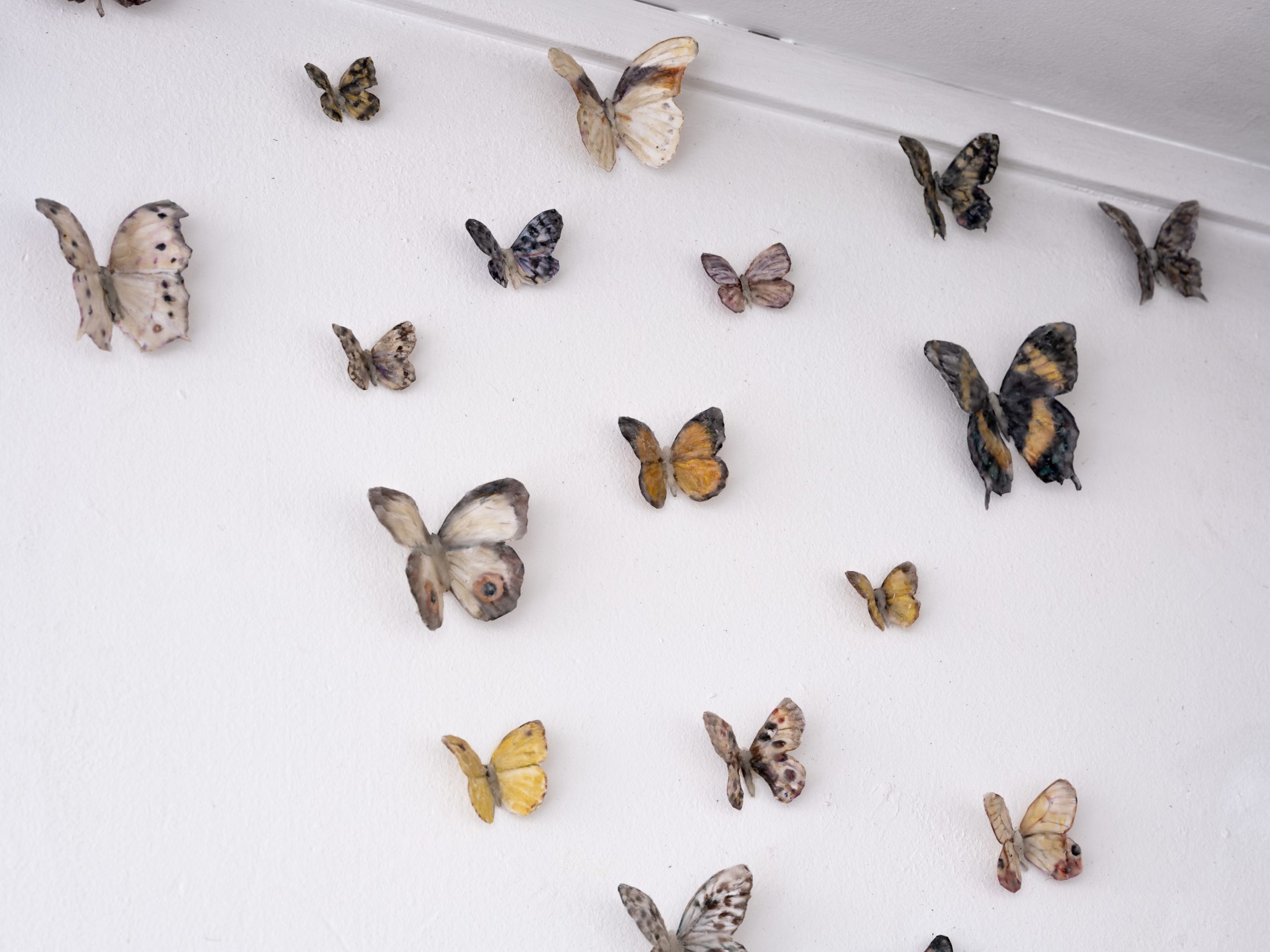





















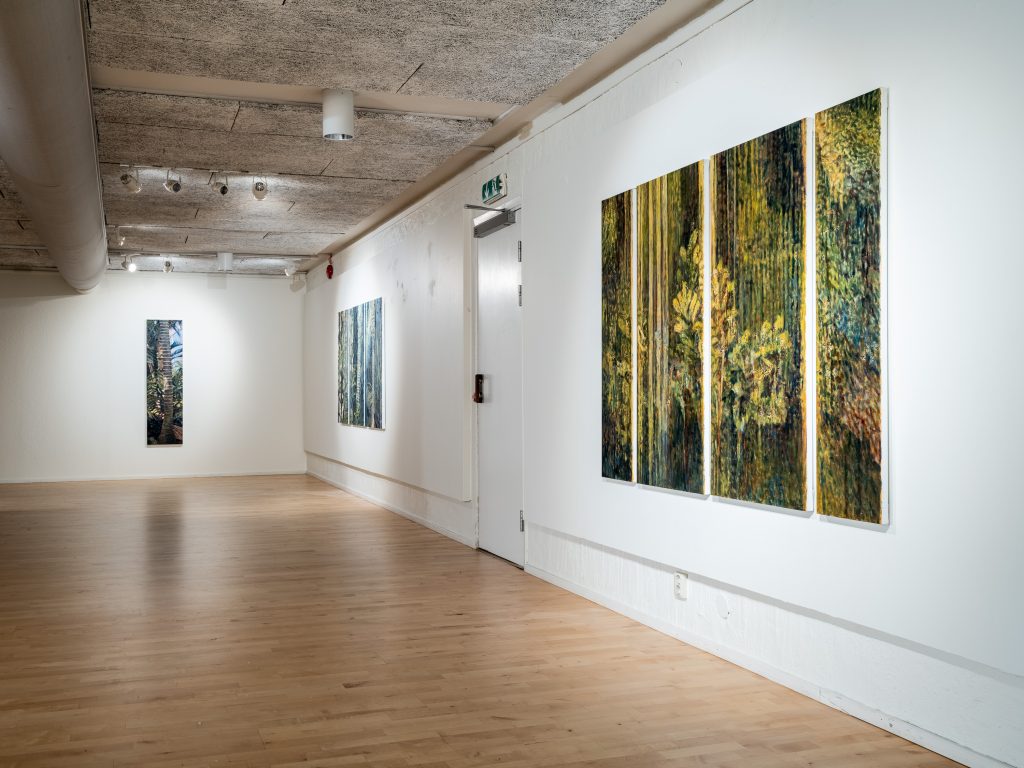



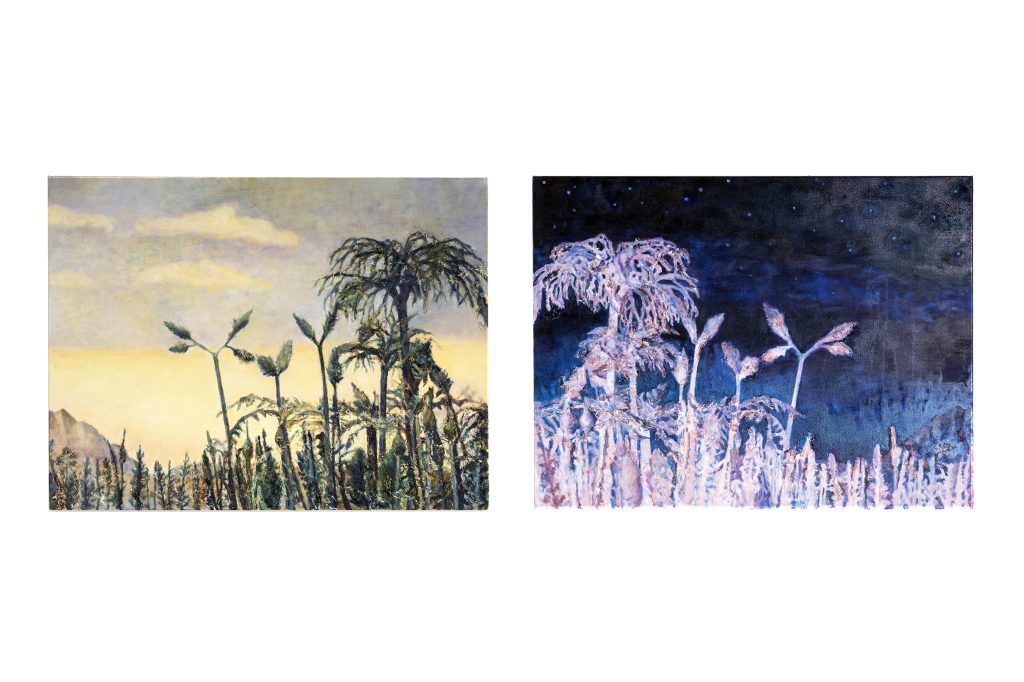

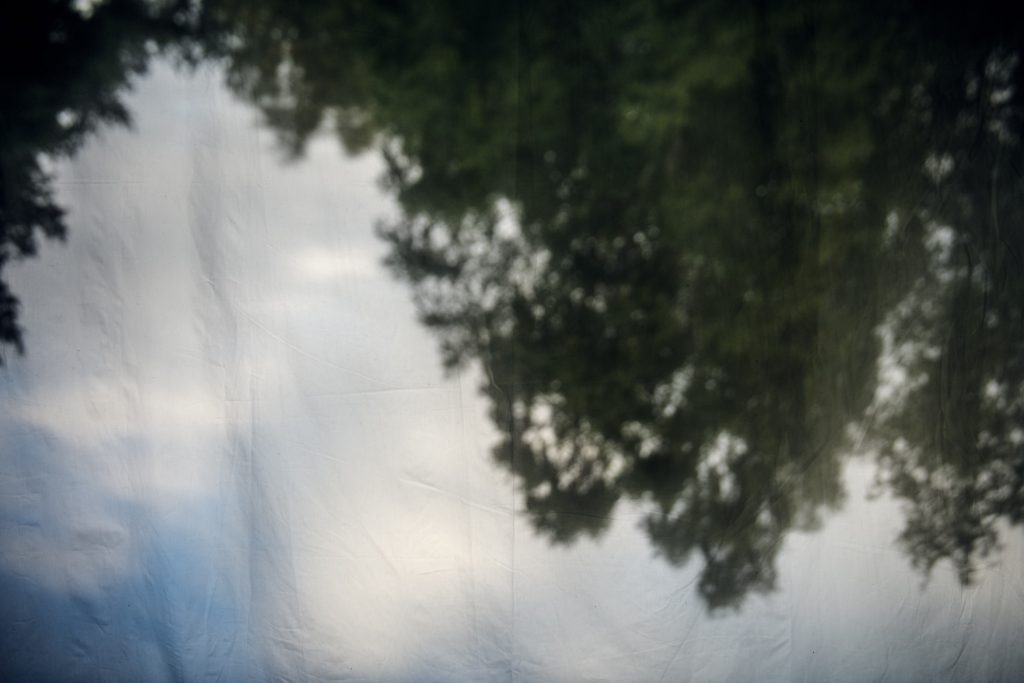












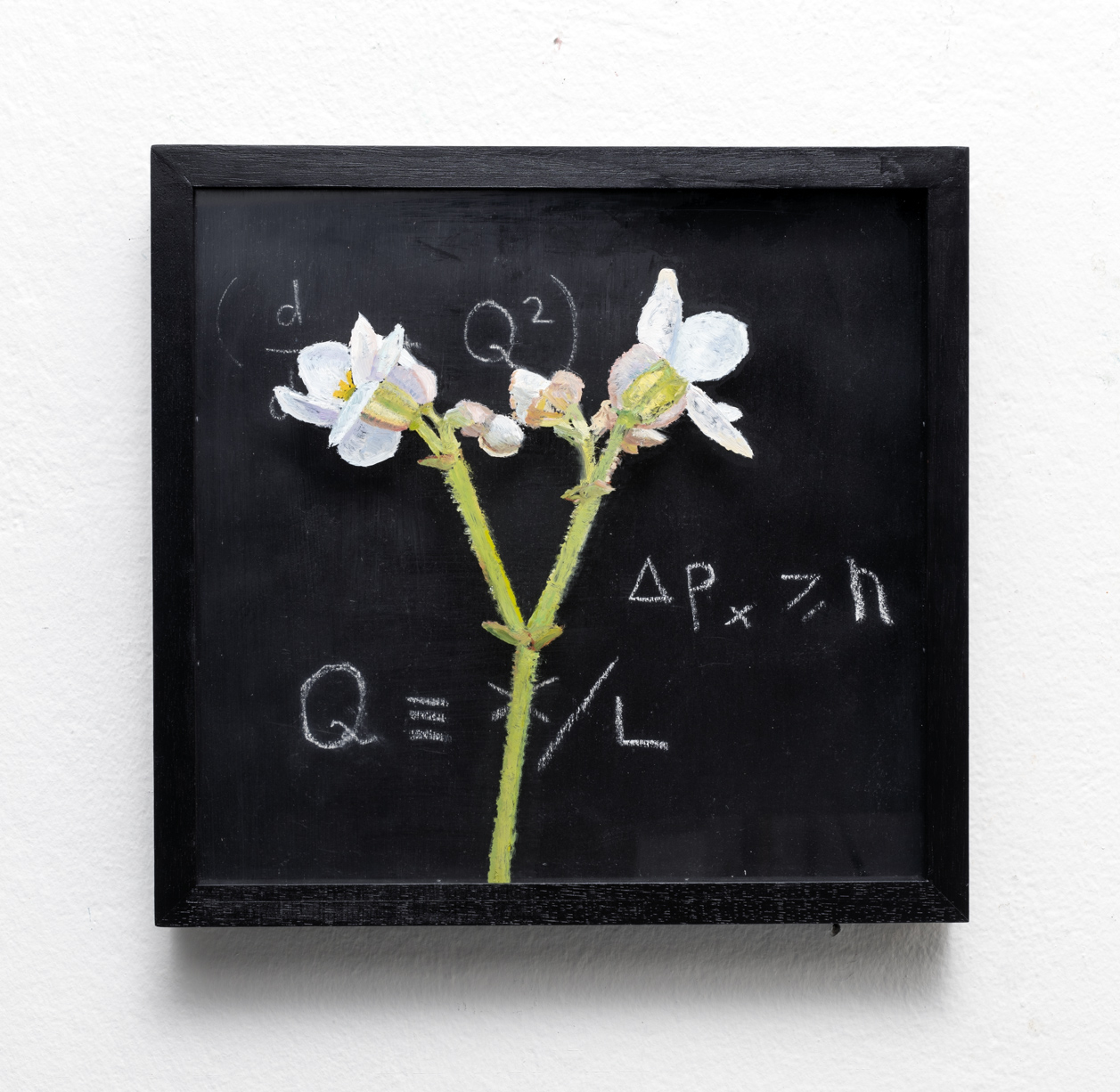



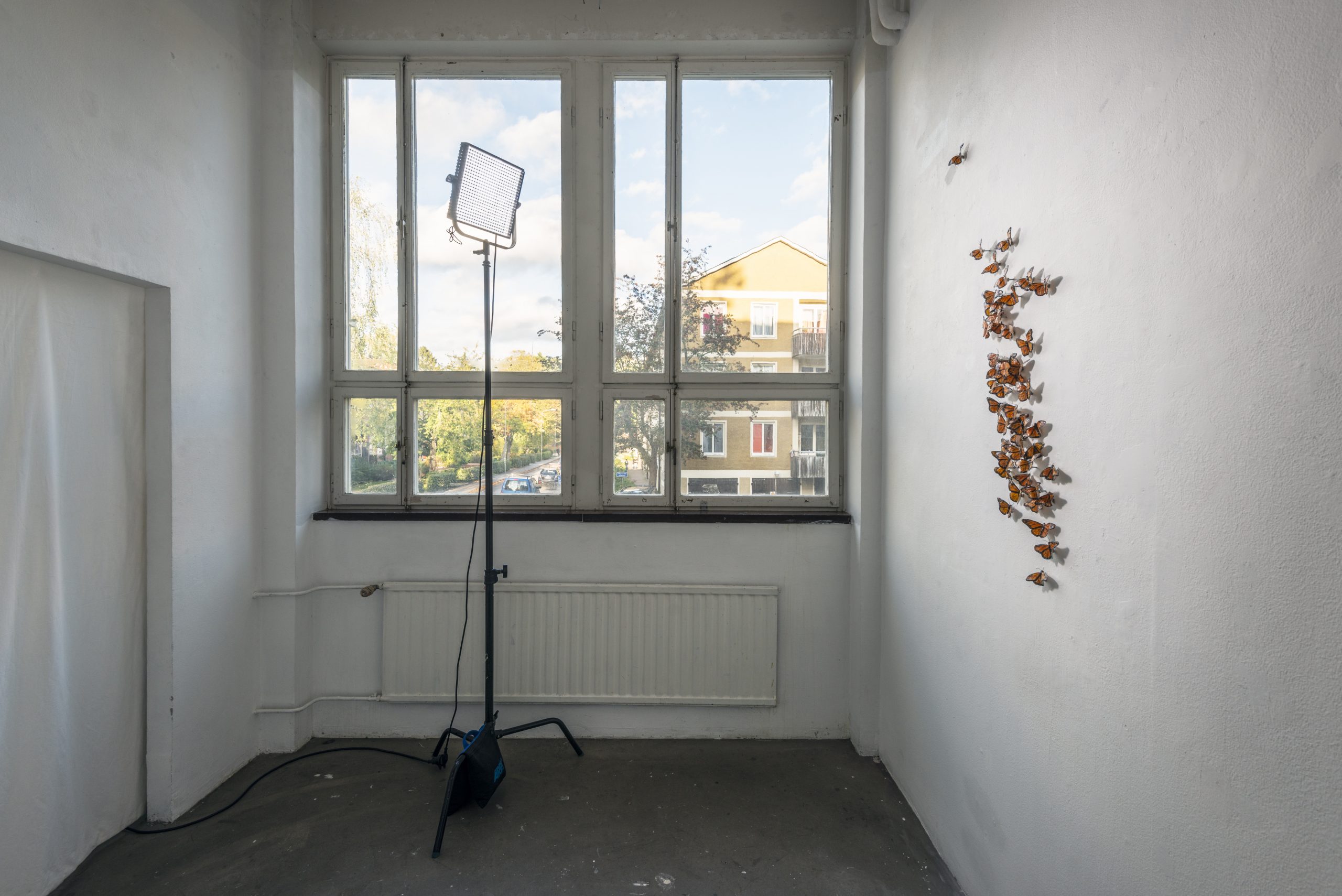
 Installation views; 50 sculptures made of paper, watercolor, wax, pigment and shellac and a lite panel lamp. The sculptures are in scale 1:1
Installation views; 50 sculptures made of paper, watercolor, wax, pigment and shellac and a lite panel lamp. The sculptures are in scale 1:1


 Mosaik, mixed media and oil on linen, 140 x 65 cm
Mosaik, mixed media and oil on linen, 140 x 65 cm Ekon, mixed media and oil on linen, 140 x 96 cm
Ekon, mixed media and oil on linen, 140 x 96 cm  Fragment of Grey, installation view, Krognoshuset. Photo; Erik Hagman
Fragment of Grey, installation view, Krognoshuset. Photo; Erik Hagman Fragment of Grey, detail.
Fragment of Grey, detail. No Victory, mixed media on linen and oil on acrylic glass, painted wooden frame, 75 x 49 x 9,5 c
No Victory, mixed media on linen and oil on acrylic glass, painted wooden frame, 75 x 49 x 9,5 c
 Lost Garden, oil on glass, and oil on linen, painted wooden frame, 26 x 23,5 x 5 cm
Lost Garden, oil on glass, and oil on linen, painted wooden frame, 26 x 23,5 x 5 cm Dilemmat, installation view, Krognoshuset, 2020
Dilemmat, installation view, Krognoshuset, 2020 Dilemmat, mixed media and oil on linnen, oil on acrylic glass, painted wooden frame,
Dilemmat, mixed media and oil on linnen, oil on acrylic glass, painted wooden frame,  The structures will collapse; Site specific installation in the basement. Oil on glass, overhead projector, paper, glue, pigment and tempera on board. Photo; Erik Hagman
The structures will collapse; Site specific installation in the basement. Oil on glass, overhead projector, paper, glue, pigment and tempera on board. Photo; Erik Hagman Installation views and detail
Installation views and detail